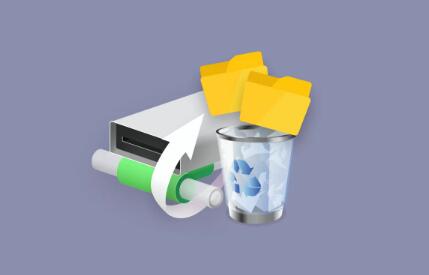Recovering deleted files from a shared network drive can be a complex process, depending on several factors such as the operating system, the type of network setup, and whether backups are available. Here’s a detailed guide to help you through the recovery process.
1. Environment
Before attempting any recovery, it’s essential to understand the network environment:
Operating System: Identify whether the shared drive is hosted on a Windows Server, Linux, or another type of system.
Backup Solutions: Determine if there are any backup systems in place, such as Windows Backup, third-party software, or cloud backups.
User Permissions: Ensure you have the necessary permissions to access the shared drive and its backup solutions.

2. Check the Recycle Bin
For most Windows environments, deleted files may first go to the Recycle Bin before being permanently removed. Here’s how to check:
On the Network Drive: Open the Recycle Bin icon on your desktop or in File Explorer. Navigate to the network drive to see if the deleted files are listed.
Restore Files: Right-click on the file you want to recover and select “Restore.” This action will return the file to its original location.
3. Use Previous Versions
Windows has a feature called “Previous Versions” that allows you to recover files based on restore points. Here’s how to access it:
Right-click on the Folder: Navigate to the folder where the file was located.
Select ‘Restore Previous Versions’: This option will show you a list of available versions of the folder.
Choose a Version: Select the appropriate version that might contain your deleted file.
Restore: Click on “Restore” to recover the folder to that previous state.
4. Use Backup Software
If your organization uses backup software, you may be able to recover deleted files easily. Here are some common tools:
Windows Server Backup: If your network drive is managed by Windows Server, you can use Windows Server Backup to restore files.
Third-party Backup Solutions: Solutions like Veeam, Acronis, or Backup Exec can provide recovery options. Check your organization’s backup policy for details.
Steps for Recovery:
Access the Backup Tool: Open the backup application used in your organization.
Locate the Backup: Navigate to the section where the backups are stored.
Select the Relevant Backup Date: Choose the backup that would contain your deleted files.
Restore the Files: Follow the application’s instructions to restore the desired files or folders.
5. File Recovery Software
Panda Assistant is a data recovery software designed to help users recover lost or deleted files from various storage devices, including hard drives, USB drives, and shared network drives. With a user-friendly interface, Panda Assistant simplifies the recovery process, making it accessible even for those with minimal technical knowledge.
File Recovery: Easily recover deleted files, including documents, photos, videos, and more.
Deep Scan: Perform thorough scans to locate files that might be harder to find.
Preview Functionality: View recoverable files before restoring them, ensuring you select the correct ones.
Multiple File Systems: Supports various file systems like NTFS, FAT32. and exFAT.
Safe Recovery: Designed to prevent further data loss during the recovery process.
How It Works:
Installation: Download and install Panda Assistant on your computer.
Select Storage Device: Choose the drive where you want to recover files from.
Scan: Initiate a scan to find deleted files.
Recover: Select the files you wish to restore and save them to a safe location.
6. Contact IT Support
If you are unable to recover the files yourself or if the situation is critical, it’s best to contact your IT department or a professional data recovery service. They may have additional tools or access to backups that you do not.
7. Prevent Future Data Loss
After recovering your files, consider implementing measures to prevent future data loss:
Regular Backups: Ensure that regular backups of the shared drive are taken and that they are verified for integrity.
User Education: Train users on proper file management and the importance of using the Recycle Bin.
Access Controls: Review permissions to limit who can delete files from the shared drive.
Start with simple solutions like checking the Recycle Bin or using Previous Versions, and move on to more advanced options like backup solutions or recovery software if necessary. Always have a backup strategy in place to minimize the risk of future data loss.
About us and this blog
Panda Assistant is built on the latest data recovery algorithms, ensuring that no file is too damaged, too lost, or too corrupted to be recovered.
Request a free quote
We believe that data recovery shouldn’t be a daunting task. That’s why we’ve designed Panda Assistant to be as easy to use as it is powerful. With a few clicks, you can initiate a scan, preview recoverable files, and restore your data all within a matter of minutes.
Subscribe to our newsletter!
More from our blog
See all postsRecent Posts
- How to recover a deleted slide in powerpoint? 2025-02-27
- How to recover deleted capcut videos? 2025-02-27
- How to recover a file deleted from a shared drive? 2025-02-27










